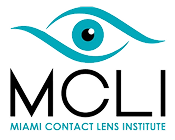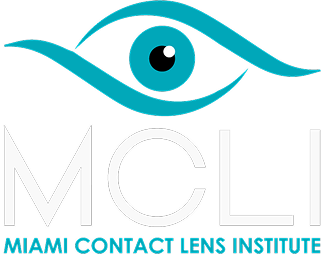The cornea is the transparent, dome-shaped outer layer of the eye that covers and protects the iris and pupil. Keratoconus is a progressive eye condition that causes the cornea to thin and bulge outward into a cone shape. This distorted shape can cause blurred vision, light sensitivity, and visual disturbance. This condition can be challenging for patients who enjoy sports or have an active lifestyle. If you’ve recently received a diagnosis, you may be wondering if playing sports with keratoconus is possible. Let’s discuss how you can safely enjoy your hobbies with keratoconus.
What Challenges Do Athletes With Keratoconus Face?
Patients with keratoconus frequently encounter several challenges when participating in physical activities. The irregular corneal shape caused by keratoconus results in distorted and fluctuating vision, which can be challenging to manage during fast-paced and visually demanding sports. Clear and stable vision is crucial for activities such as basketball, soccer, tennis, and running, where depth perception, peripheral awareness, and quick reaction times are essential.
The severity of keratoconus varies widely from person to person. Some patients have mild symptoms that barely interfere with their daily activities. By comparison, others experience significant visual impairment that affects every aspect of their lives. The degree to which keratoconus affects your ability to play sports depends on the severity of your condition and how well we can help you manage it with the appropriate treatment.
Are There Keratoconus Treatments That Work for Active Patients?
A vital factor that will improve your ability to remain active is achieving the best possible vision correction. Standard eyeglasses often cannot fully correct the irregular vision caused by keratoconus. However, there are specialized contact lenses for athletes with keratoconus that are customized to fit the individual needs of each patient, called scleral lenses.
Scleral lenses are an effective vision correction method for athletes because they are designed to vault over the irregular cornea and provide a substitute corneal surface. These unique lenses deliver sharp, stable vision along with an overall more comfortable contact lens experience. Scleral lenses cause less irritation than traditional contact lenses because they are custom designed for the unique shape of each eye, their large size keeps them stable and centered in place on the eye, and they do not touch the cornea, instead they rest on the sclera.
We also recommend corneal collagen crosslinking treatments to halt the progression of keratoconus. The procedure strengthens the cornea by encouraging collagen fibers to bond more tightly together, thereby increasing the cornea’s stability. Crosslinking can also cause flattening of the cornea, which can improve visual clarity. While further progression can be prevented, many patients still require additional correction, such as with scleral lenses, to achieve optimal vision.
Tips for Active Patients With Keratoconus
Keratoconus can be a challenging condition, but with the proper preparation, you can still enjoy your favorite activities. Here are a few keratoconus lifestyle tips for patients who want to protect their vision while participating in physical activities.
Protect Your Eyes While Playing Sports
Protecting your eyes is essential when you have keratoconus and participate in sports, as the corneas are particularly vulnerable to injury. It’s advisable to invest in high-quality protective eyewear that is designed to shield your eyes from impacts, debris, and UV radiation. Depending on your specific sport, you may benefit from goggles or polycarbonate sports glasses. Protective eyewear can be worn over your scleral lenses to provide a physical barrier without reducing visual clarity.
Scleral lenses can also protect the eye from injury by providing a shield over the ocular surface.
For water sports like polo and swimming, we recommend goggles with a precise fit that can prevent lens loss. Goggles also protect your eyes from irritation and infection. Water carries micro-organisms that can contaminate contact lenses so if you spend several hours in a pool, your risk of infection may be increased.
Manage Ocular Discomfort
Sports and physical activity can cause dry eye and irritation, particularly in patients with keratoconus who have sensitive ocular surfaces. Hydration and hygiene are critical for maintaining comfort and protecting your vision. Your eye care practitioner may recommend preservative-free artificial tears that can be used before and after exercise to improve lubrication. Avoid rubbing your eyes if they get itchy, as it can worsen keratoconus.
If your sport is played outdoors, avoid dusty or smoky environments that can cause irritation. Always use eye protection outdoors, regardless of the conditions. If you wear scleral lenses, you should follow the hygiene and replacement routine prescribed by your eye care specialist. If your eyes become red, irritated, or painful, you may have an infection or dry eye, which can be managed by reporting them to your eye care practitioner immediately.
Maintain Communication With Your Doctor
Regular eye exams are essential for keratoconus patients, especially if you participate in sports. Your eyecare practitioner will monitor the progression of your condition and adjust your treatment regimen and vision correction as needed. If you notice sudden changes in your visual clarity or increased discomfort during sports, call your practitioner and schedule an exam.
Expert Keratoconus Support and Treatment
If you have keratoconus or suspect that you may have keratoconus, don’t hesitate to get in touch with the Miami Contact Lens Institute. It is possible to play sports and have good vision with keratoconus, as long as you have the appropriate tools. You can continue to enjoy and thrive in your athletic pursuits, in spite of keratoconus, with the help of scleral lenses and protective eyewear.

.jpg)
